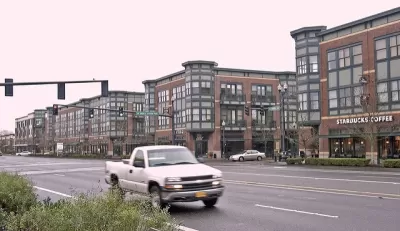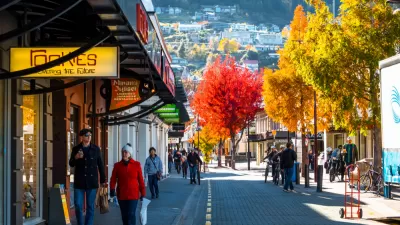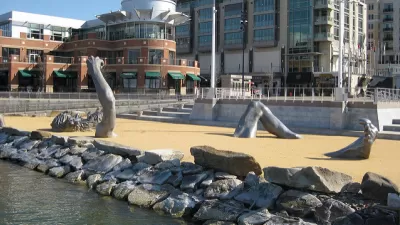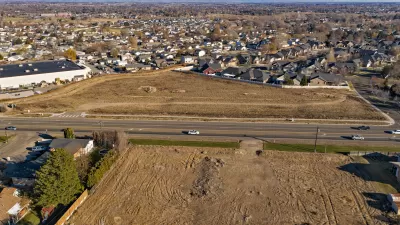The practice of limiting high-density development to busy arterial streets puts renters and low-income households at higher risk for the effects of air and noise pollution created on major roads.

Henry Grabar argues that policies that encourage higher-density development only on busy streets and commercial corridors amounts to discrimination against renters that perpetuates inequality. As Grabar puts it,
Unfortunately, big streets are not nice places to live. Their traffic is noisy, dirty, and dangerous. Allowing apartment buildings to be built at all is progress, but ensuring they rise only in the worst locations is not fair to the people who live in them.
The practice elicits less resistance from neighborhood groups that want to maintain single-family zoning, notes Grabar, "[b]ut that doesn’t mean it’s a good idea." While it's logical to build housing near transit, side streets in the same areas could also be upzoned to accommodate more housing. "Many critics have rightly pointed out, in recent years, that zoning in residential neighborhoods seems a lot more concerned with types of neighbors than with the supposedly hazardous consequences of their arrival." Meanwhile, planners concerned about additional traffic from high-rise buildings naturally lean toward placing them on busier roads, compounding the problem.
In an October article, Daniel Oleksiuk made a similar argument, calling for Vancouver to stop relegating multi-family dwellings to busy arterials and effectively turning renters into a 'buffer' for the pollution caused by crowded urban streets. According to Oleksiuk, while some people may choose to live on busy thoroughfares for the convenience, renter households should not be forced to suffer the brunt of urban pollution and public health hazards.
FULL STORY: Upzone the Side Streets!

Planetizen Federal Action Tracker
A weekly monitor of how Trump’s orders and actions are impacting planners and planning in America.

Congressman Proposes Bill to Rename DC Metro “Trump Train”
The Make Autorail Great Again Act would withhold federal funding to the system until the Washington Metropolitan Area Transit Authority (WMATA), rebrands as the Washington Metropolitan Authority for Greater Access (WMAGA).

The Simple Legislative Tool Transforming Vacant Downtowns
In California, Michigan and Georgia, an easy win is bringing dollars — and delight — back to city centers.

The States Losing Rural Delivery Rooms at an Alarming Pace
In some states, as few as 9% of rural hospitals still deliver babies. As a result, rising pre-term births, no adequate pre-term care and "harrowing" close calls are a growing reality.

The Small South Asian Republic Going all in on EVs
Thanks to one simple policy change less than five years ago, 65% of new cars in this Himalayan country are now electric.

DC Backpedals on Bike Lane Protection, Swaps Barriers for Paint
Citing aesthetic concerns, the city is removing the concrete barriers and flexposts that once separated Arizona Avenue cyclists from motor vehicles.
Urban Design for Planners 1: Software Tools
This six-course series explores essential urban design concepts using open source software and equips planners with the tools they need to participate fully in the urban design process.
Planning for Universal Design
Learn the tools for implementing Universal Design in planning regulations.
Smith Gee Studio
City of Charlotte
City of Camden Redevelopment Agency
City of Astoria
Transportation Research & Education Center (TREC) at Portland State University
US High Speed Rail Association
City of Camden Redevelopment Agency
Municipality of Princeton (NJ)





























